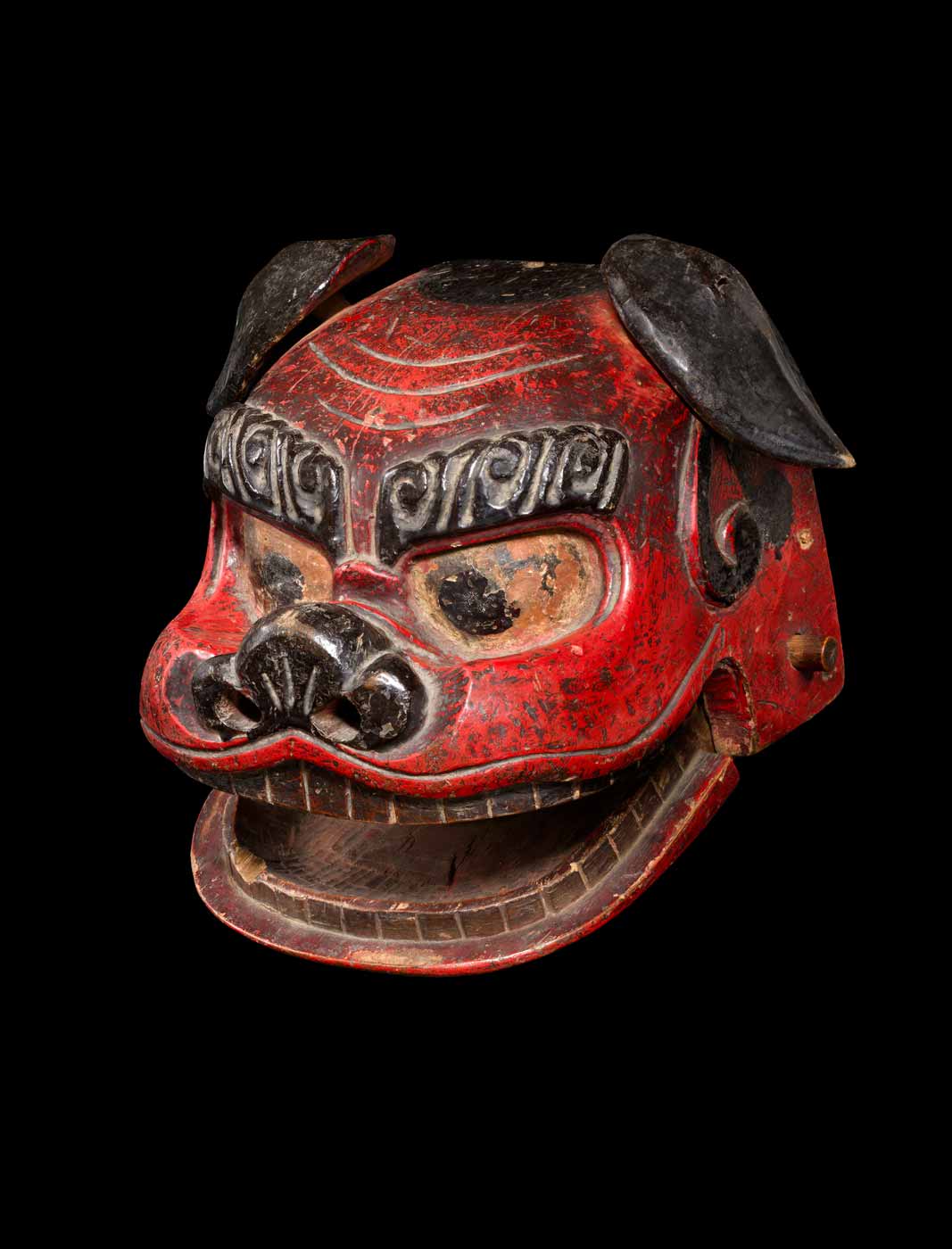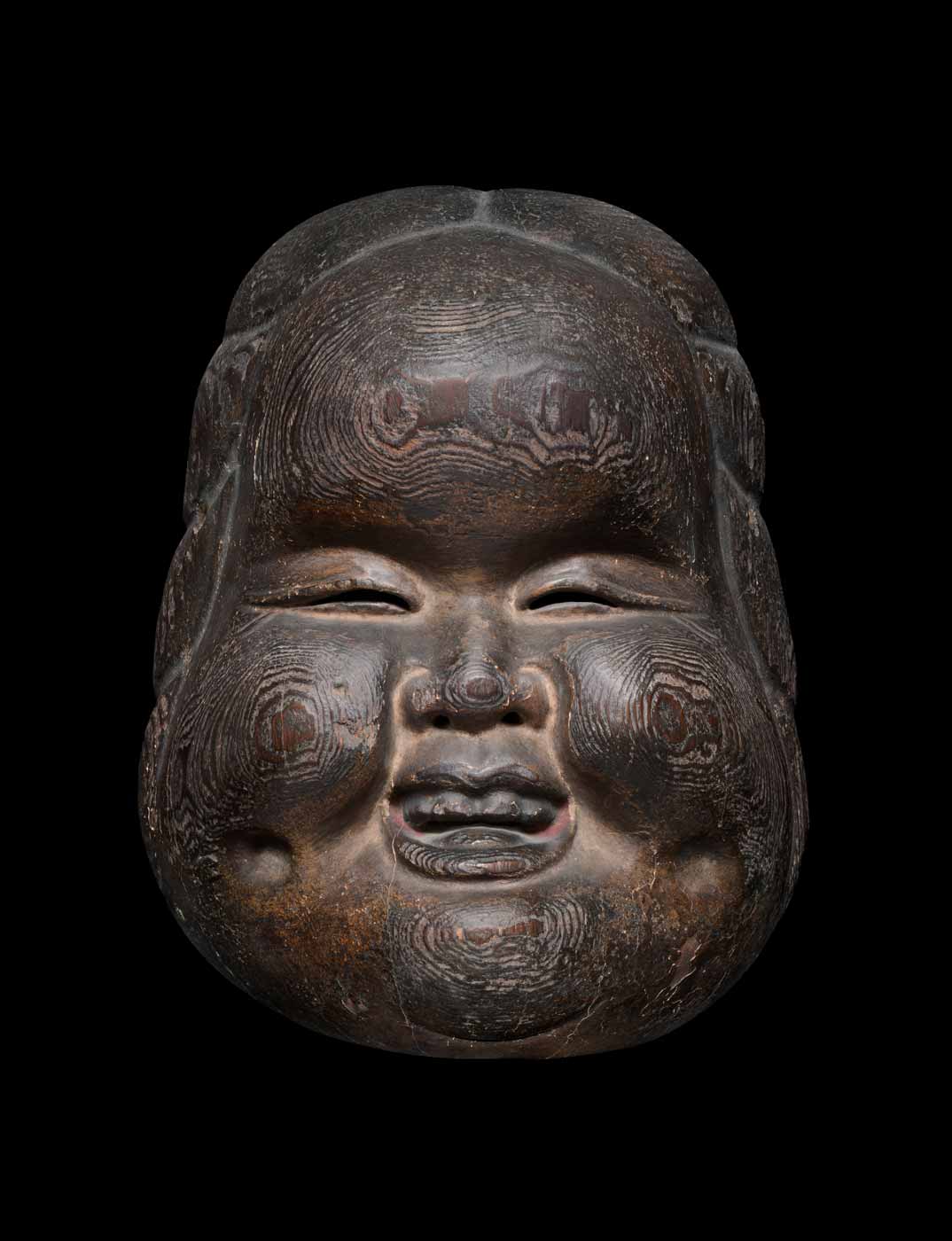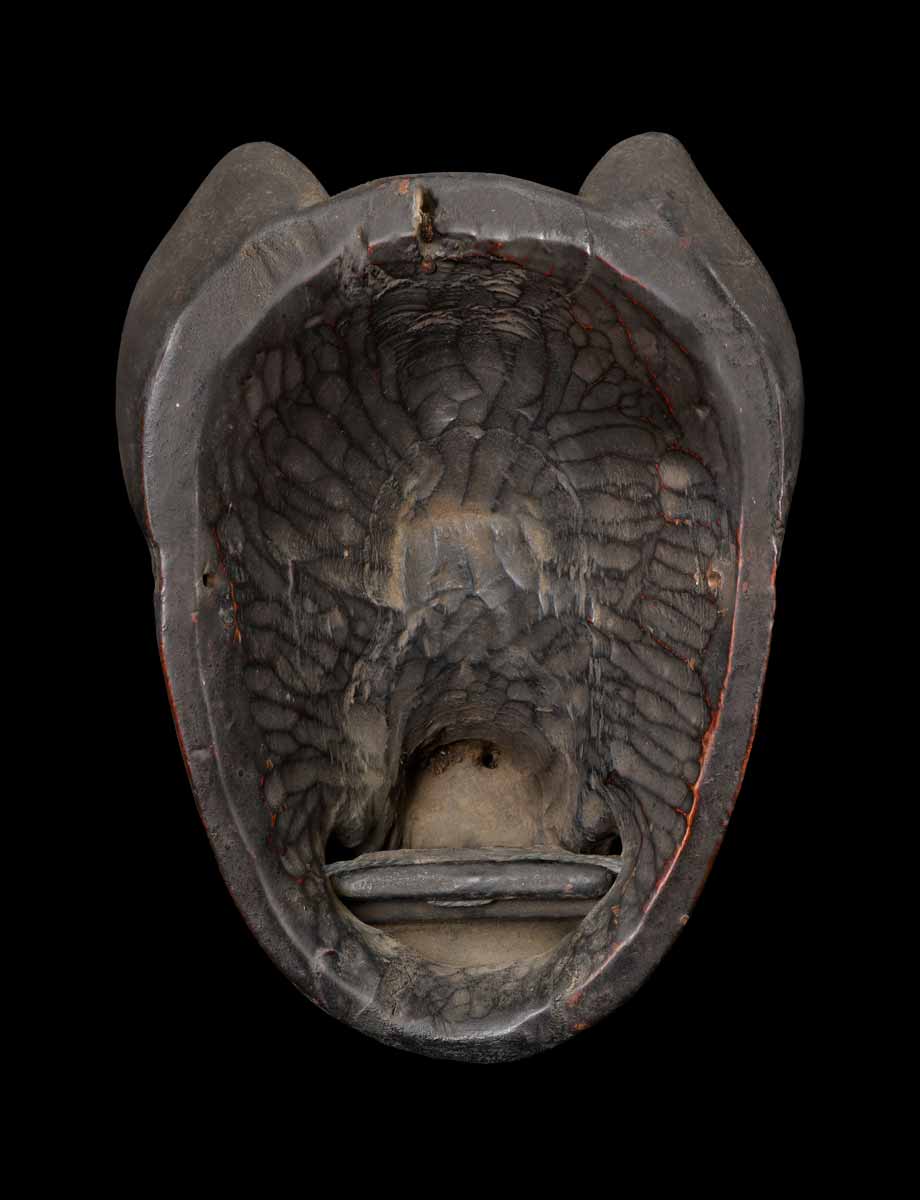Shishi
Mask
- Contact Us
-
Material
Wood and pigments
-
Period
Edo period, 18th–19th century
Description
SHISHI MASK
The Shishi-men (獅子面, “lion mask”) depicts a mythical creature that came to Japan from China through the Buddhist tradition of India. It embodies strength, wisdom, and protection, serving as a powerful apotropaic symbol and guardian of temples, warding off evil spirits.
Such masks were used in ritual, festive, and performative contexts, though not in classical Noh theatre, where the lion is represented instead by a vivid red wig. They appear in Bugaku (舞楽), the ancient court dance in which the shishi performs protective dances, and in the Shishimai (獅子舞, “lion dance”), performed at Shintō shrines during the New Year or local festivals to purify spaces, repel malevolent forces, and bring good fortune.
The movable jaw, a distinctive feature of the shishi-men, allowed the performer to make the lion’s mouth snap open and shut — a gesture believed to frighten away demons and invite luck. During the Shishimai, when the lion “bites” a child’s head, the act is thought to bestow health and happiness for the year ahead.


